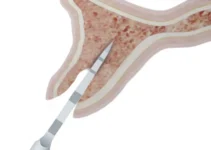Exploring the surgical treatment for snoring can offer valuable insights for individuals seeking relief from this common ailment. While many consider snoring a mere annoyance, it can significantly impact sleep quality and overall health. Surgical options aim to address the physical obstructions in the airways, such as excess tissue in the throat or a deviated nasal septum, which can cause turbulent airflow and result in snoring. This article delves into various surgical techniques, their effectiveness, and what patients might expect during the recovery process, providing a comprehensive overview for those considering this treatment avenue.
Types of Surgical Treatments for Snoring
Snoring is a common condition that affects many people and can significantly impact the quality of sleep for both the snorer and their partner. When lifestyle changes and other non-invasive treatments don’t work, surgery may be considered. Here are some common surgical treatments for snoring: Surgical treatments for snoring can be broadly categorized into several types based on the anatomical structures they target. These procedures are designed to reduce or eliminate the vibrations and obstructions in the airway that cause snoring. Some of the most widely practiced surgical treatments include Uvulopalatopharyngoplasty (UPPP), Radiofrequency Ablation (RFA), and the Pillar Procedure.
Uvulopalatopharyngoplasty (UPPP)
Uvulopalatopharyngoplasty (UPPP) is one of the most common surgical treatments for snoring. This procedure involves removing excess tissue from the throat, including parts of the uvula, soft palate, and pharynx. By doing so, UPPP aims to enlarge the airway and reduce the vibrations that cause snoring.
Studies have shown that UPPP can be effective in reducing the severity of snoring, but it may not be a permanent solution. Some patients experience a recurrence of snoring over time. Additionally, like all surgical procedures, UPPP carries risks such as infection, bleeding, and complications related to anesthesia.
Patients considering UPPP should discuss the potential benefits and risks with their healthcare provider. It’s important to have a detailed understanding of the procedure, recovery process, and possible outcomes before making a decision.
Radiofrequency Ablation (RFA)
Radiofrequency Ablation (RFA) is a minimally invasive surgical technique used to treat snoring. This procedure uses radiofrequency energy to shrink and stiffen the tissues of the soft palate and uvula. By reducing the flexibility and size of these tissues, RFA can significantly decrease the likelihood of snoring.
One of the main advantages of RFA is its minimally invasive nature. The procedure generally involves less pain and a quicker recovery period compared to more extensive surgical options like UPPP. Additionally, RFA can often be performed under local anesthesia, making it a convenient option for many patients.
Despite these benefits, RFA may require multiple treatment sessions to achieve optimal results. Patients should be aware that the full effects of the procedure might not be immediately apparent and may develop gradually over several weeks or months.
Pillar Procedure
The Pillar Procedure is another minimally invasive treatment for snoring that involves the insertion of small, flexible implants into the soft palate. These implants help to stiffen the palate, reducing the vibrations that cause snoring. Over time, the body’s natural tissue response to the implants further increases the stiffness and stability of the soft palate.
Clinical studies have demonstrated that the Pillar Procedure can be an effective treatment for snoring and mild to moderate obstructive sleep apnea. The procedure is typically performed in a doctor’s office under local anesthesia and has a relatively short recovery period.
However, it’s important to note that the Pillar Procedure may not be suitable for everyone. Patients with severe sleep apnea or those who have large tonsils or a long uvula might require more comprehensive surgical interventions. As with any medical treatment, discussing the specific benefits and limitations with a healthcare provider is crucial.
In conclusion, the appropriate surgical treatment for snoring depends on the individual patient’s condition and needs. Consulting with a specialized healthcare provider can help determine the most suitable option. For more insightful articles on sleep-related issues and advanced medical treatments, continue exploring our blog.
Benefits of Surgical Treatments
Surgical treatments in dentistry have revolutionized the way oral health issues are addressed. The advancements in technology and surgical techniques have brought about numerous benefits, ensuring that patients receive optimal care with minimal discomfort. When it comes to procedures such as implants and bone regeneration, the advantages are multifaceted, impacting not just the oral cavity but overall well-being.
Enhanced aesthetic outcomes, improved functionality, and long-term oral health are among the primary benefits of surgical treatments. Additionally, these procedures can significantly enhance a patient’s confidence and quality of life. The precision and predictability of modern surgical interventions also lead to faster recovery times and fewer complications.
Another critical benefit is the interrelationship between oral health and systemic health. Numerous studies have indicated that maintaining good oral health through surgical interventions can prevent systemic issues such as cardiovascular diseases and diabetes. This holistic approach to dental care underscores the importance of surgical treatments in promoting overall health.
Improved Sleep Quality
Oral surgical treatments can greatly improve sleep quality, especially for individuals suffering from conditions like obstructive sleep apnea (OSA). OSA is a serious condition where the airway becomes blocked during sleep, leading to interrupted breathing and poor sleep quality. Surgical interventions, such as the placement of dental implants or corrective jaw surgery, can alleviate these obstructions and promote better airflow.
For example, patients with severe cases of sleep apnea might benefit from surgical repositioning of the jaw, a procedure known as maxillomandibular advancement. This surgery enlarges the airway, reducing the occurrence of apneas and significantly improving sleep quality.
Furthermore, dental surgeries that address structural issues in the oral cavity, such as the removal of large tonsils or excess tissue, can also mitigate snoring and other sleep disturbances. Enhanced sleep quality through these surgical treatments not only helps patients feel more rested but also reduces the risk of associated health problems such as hypertension and heart disease.
In conclusion, the intersection of dental surgical treatments and sleep quality highlights the extensive benefits these procedures can offer. By addressing the root causes of sleep disorders, patients can achieve a better night’s rest and, consequently, a healthier life. To learn more about how dental improvements can affect other aspects of health, explore our other articles on comprehensive dental care and wellness.
Risks and Considerations
Undergoing dental implant surgery can be a life-changing decision, offering a durable solution to missing teeth. However, it is essential to be aware of the risks and considerations associated with the procedure. Understanding these factors helps you make an informed choice and prepares you for what to expect throughout the process.
While dental implants have a high success rate, certain risks and considerations must be taken into account. This includes potential complications during and after the surgery, the recovery period, and the long-term effectiveness of the implants.
Possible Complications
Just like any surgical procedure, dental implant surgery comes with its own set of potential complications. One of the primary concerns is infection at the implant site, which can occur if proper oral hygiene is not maintained. Infection can lead to implant failure and may require additional treatments. Another possible complication is nerve damage. If the nerves surrounding the implant site are affected, it can result in pain, numbness, or tingling in the natural teeth, gums, lips, or chin. To minimize this risk, a thorough preoperative assessment and precise surgical technique are essential.
Additionally, there is a risk of implant failure where the implant does not properly integrate with the bone, known as osseointegration failure. Various factors such as insufficient bone density, poor oral hygiene, and smoking can influence this outcome.
Recovery Time
Recovery time following dental implant surgery can vary based on individual health, the complexity of the procedure, and how well the patient adheres to post-operative care instructions. Generally, the initial healing phase takes about 1-2 weeks, during which patients may experience mild discomfort and swelling.
The process of osseointegration, where the titanium implant fuses with the jawbone, typically takes around three to six months. During this period, it is crucial to maintain excellent oral hygiene and follow dietary recommendations to ensure optimal healing and implant stability.
Patients are advised to avoid strenuous activities and smoking during the recovery phase as these can impede healing and increase the risk of complications. Regular follow-up appointments with the dentist are necessary to monitor the progress and address any concerns.
Long-Term Effectiveness
The long-term effectiveness of dental implants largely depends on several factors, including the patient’s overall health, oral hygiene practices, and the quality of the implant and surgical procedure. With proper care, dental implants can last 15-20 years or more, making them a durable and cost-effective solution for tooth replacement.
Studies have shown that dental implants boast a success rate of over 95%, making them one of the most reliable options for replacing missing teeth. However, it is essential to regularly visit the dentist for check-ups and professional cleanings to maintain implant health.
Patients must commit to maintaining good oral hygiene by brushing and flossing daily and avoiding habits such as smoking, which can significantly compromise the longevity of the implants. Following these guidelines can help ensure the long-term success of dental implants.
For more information on dental implants, recovery tips, and other related topics, explore our other articles and expand your understanding of this transformative dental procedure.
Common Questions About Surgical Treatment for Snoring
Many individuals explore surgical options to address snoring issues. Here are some frequently asked questions that can help you understand the process and outcomes of such treatments.
What surgical options are available to treat snoring?
Several surgical procedures can help reduce or eliminate snoring, depending on its underlying causes. Common surgeries include Uvulopalatopharyngoplasty (UPPP), which tightens and trims excess tissues in the throat; Thermal Ablation Palatoplasty (TAP), which uses radiofrequency energy to shrink tissues in the soft palate; and Genioglossus Advancement (GA), which repositions the tongue to prevent airway obstruction. The appropriate procedure varies based on the individual’s specific condition and anatomy.

My name is Salman Kapa, a 73-year-old expert in bone regeneration and dental implantology. With decades of experience in the field, I am dedicated to advancing our understanding of oral health and hygiene. Through my research and writing, I aim to contribute to the development of innovative solutions in dental care.




